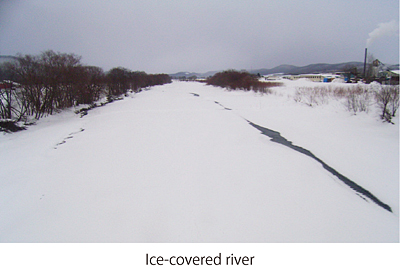River Engineering Research Team
Recently, there has been a concern that the risk of overtopping floods spawned by local torrential rains is increasing, therefore technologies to mitigate damages on the occasion of levee failures and technologies for safety assessment of levees are needed. In response to this situation, the team is conducting large-scale overtopping failure experiments close to the actual scale using the Chiyoda Experimental Water Channel, in order to elucidate the mechanisms of levee break expansion and analyze the hydraulic characteristics, thereby researching to improve the disaster mitigation techniques against overtopping failures, safety evaluation technologies for levees, and non-structural countermeasure techniques in flooded areas.

River-ice hazard such as ice jams, i.e. ice blocking the river channel during snowmelt season, occur in ice-covered rivers in snowy, cold regions. Moreover, the impacts of global warming are expected to increase the risk of disasters in the future. Also, the precision of discharge observations is compromised by the impact of ice. Therefore, the team is working to elucidate the hydraulic characteristics in an ice-covered river, field observation is carried out, and develop a numerical calculation model that can reproduce ice sheet thickness and hydraulic of ice-covered rivers as a preliminary step to proposing ice disaster countermeasures.

